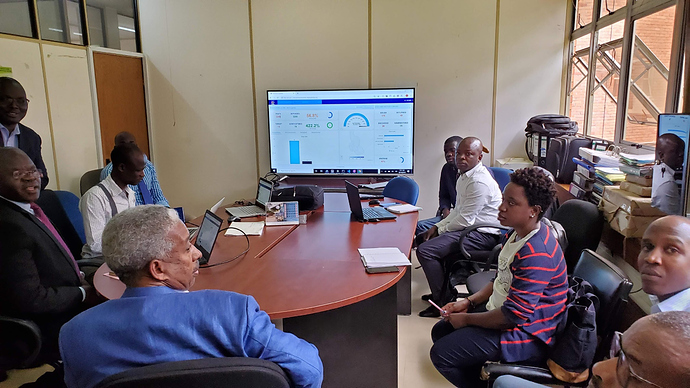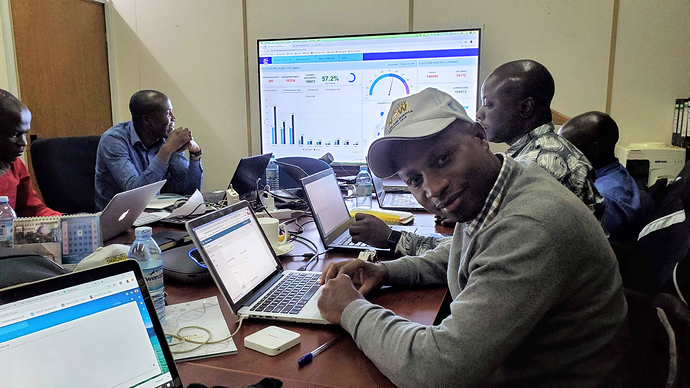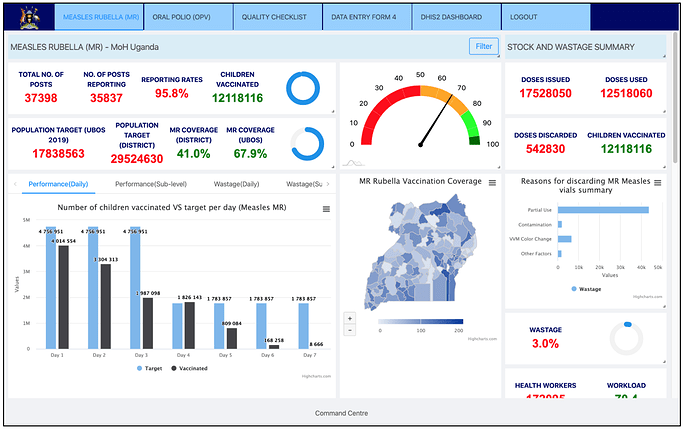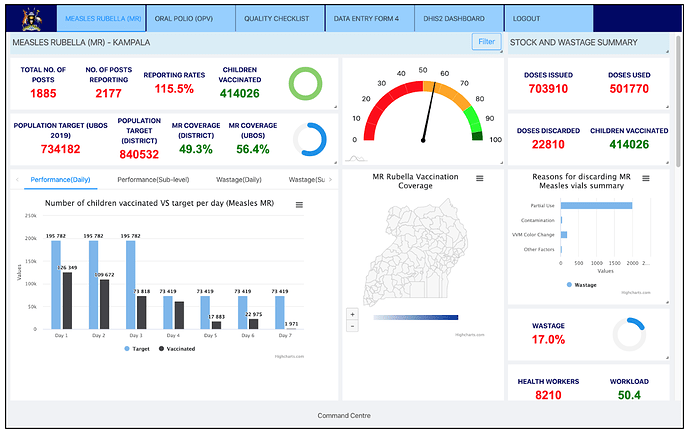Real time Data for Action during the Mass Measles-Rubella and Polio Campaign Uganda – 2019
By HISP Uganda Team
On 15th October 2019, the Minister of Health together with Partners launched a country-wide Measles- Rubella and Polio mass immunization campaign that targeted vaccination of 18 and 8 million children for measles-rubella and polio respectively. The first 3 days targeted the school going children and the last 2 days of the campaigns targeted the community for homestay and mop-up of children who had missed being vaccinated at school.
With such a massive and time constrained activity, there was a need for real time collection and transmission of data from immunization sites across the country to monitor performance of key indicators at national, and sub-national level. . Key indicators, selected by the national task team, for real time monitoring included; vaccination coverage, logistics monitoring, wastage and health workers workload WHO AFRO supported WHO Uganda to set up an ODK implementation to collect and transmit data from the field to a central server. However, the ODK system posed a challenge of lack of user friendly visuals at the National Command Centre and at all Command Centres across the 135 districts.
With funding from WHO Uganda, a team of HISP Uganda system analysts and developers procured a smart display TV and video conference equipment and set up real time DHIS2 dashboards at the MoH National Command Centre. The platform was also available to the districts to view and act on their data. A combination of ODK integration with DHIS2 and development of custom DHIS2 dashboard App were used to achieve real time interactive drill down visuals for the command centres. A copy of the data is intercepted en-route to the ODK server and synchronized with the dhis2 server and the dhis2 dashboard.
Real time Visual Display
Dashboard as viewed by the National Command Centre
Dashboard as viewed by the District Command Centre
Benefits of this App to the Uganda Campaign and DHIS2 community
The custom DHIS2 Dashboard App was pivotal for the success of the immunization campaign. It ensured transmission of real time data from immunization sites to the national and district command centres to inform real time decisions. Due to the overwhelming number of children and delay caused by children’s fear of injections, a timely decision was made to extend the campaign for two more days. This decision was supported by data transmitted to the command centres indicating number of children immunized against the national target.
In addition, a call centre was established at the National Command Centre to provide feedback to districts and supervisors whenever errors or low coverage was noted. Districts and supervisors would also call the national command centre to seek guidance, provide updates and progress on follow up actions. With all eyes glued to the 66” Smart TV, data trickled in and dashboards automatically updated in an almost 24 hours “big brother” show. Outside the command centres, dashboards were accessible to users when granted access using the DHIS2 user authentication.
To the dhis2 community this is the start of building requirements for a generic real time dashboards that are key to data actioning especially during public health campaigns since the majority of the countries carry out campaigns that require real time or near to real time data analysis, presentation and use.
Missed opportunities
Reliable source of targets for the immunization, before campaigns national population estimates which turned out to be a huge underestimate given that over 18 million children were immunized by the end of the campaign. Also at the district level, eligible children in schools and community were estimated and also turned out to be an underestimate. If the Education Management Information especially also using DHIS2 was in place, it would have provided better estimates and planning for the campaign.
Use of the DHIS2 android for data capture for direct synchronization of data from smartphones to DHIS2 instance that was used for dashboards. Quite often during the campaign the ODK presented a number of issues to the data submitters, timing out due to large volumes of data and multiple users across the country, inability to resubmit data in case of mistakes and many other that lead to loss of data.




